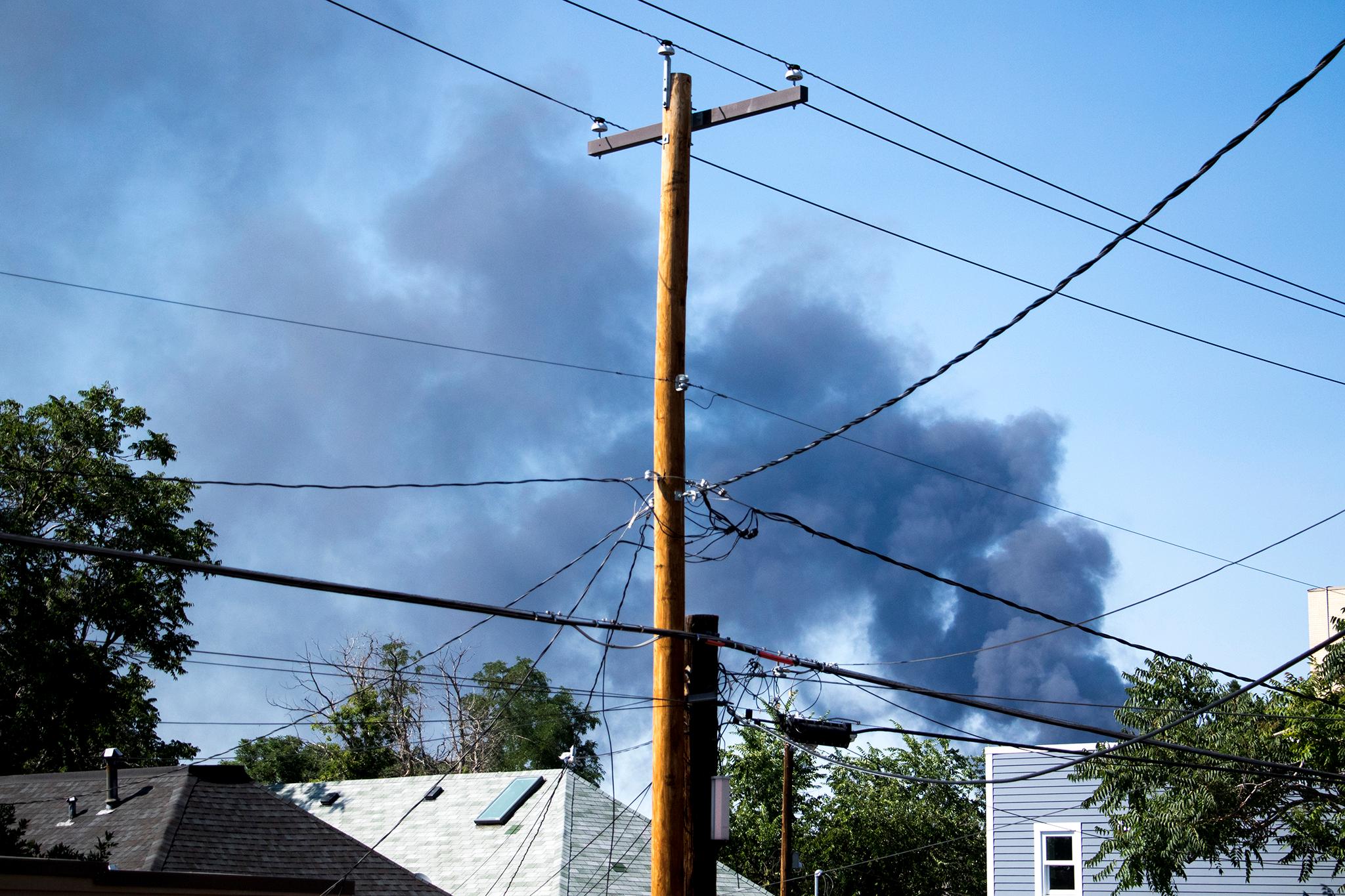Earlier this week, Denverites around the city gazed north as plumes of gray smoke billowed in the distance. To many, it looked like the ominous clouds were closer than they actually were. One person working in the Tech Center and another in Baker told me they first thought it was in city limits. I was driving in Five Points when I saw it and thought it was only a few blocks away.
The type of fire explains a bit about its size — and why it lasted into the next day.
It turned out to be pile of cars in an Adams County recycling center. The smoke was the result of burning metal, fluids and upholstery. Everyone was talking about the sight. When it happened, it might have seemed like a one-off incident, but neighbors in cities across the country were probably having these exact same conversations all year long.
A cursory search found that, since May 1 alone, at least 25 other recycling center fires occurred from Texas to Wisconsin to Oklahoma to California to Kansas to Ohio to New Jersey to Washington state to Arizona to South Carolina to Tennessee to Kentucky. It turns out scrapyard fires are the Johnny Cash of disasters. They're everywhere, man.
Let's go to Gregory Pixley, spokesperson for Denver Fire:
“I can’t say it’s uncommon, but I wouldn’t say it’s common,” he said.
While a recycling center fire might not be a regular issue for any one community, it's clear that it's a reoccurring theme across the nation. Denver is just the latest example.
Why are there so many garbage fires?
Well. Garbage is flammable.
The Adams County fire department is still investigating the cause of this week’s fire, but other accounts might shed some light on potential causes.
While it was reported that most of the incidents had unknown causes, ABC 30 reported about a fire near Fresno, California that "only took a tiny spark -- a perfect mixture of wind, high temperatures, and heavy machinery to catch several mounds of cardboard at Clovis Recycling on fire."
Near Oklahoma City, Oklahoma News 4 reported that "a worker was loading vehicles into a crusher when apparent residual fuel leaked out and caught fire."
NBC Bay Area reported that another event in Oakland, California, was caused by flammable "residue" left on a car in the yard.
Cleveland.com reported that another in Ohio was the result of "a piece of paper [that] became stuck in a forklift and caught fire."
In many of these locations, it seems there's just a lot of stuff that's liable to burn. In a yard full of cars, Denver Fire's Pixley said it's especially likely.
“When they are moving those cars around, they’re still made of metal,” he said. “They drop them, they spark, there’s still fuel in them,” and then, especially on a hot day, “that’s a recipe for disaster.”
Denver Fire, he said, has responded to “maybe two or three” similar emergencies at recycling centers in the last six months, he figured, and “we get trash fires, garbage fires all the time.”
At the Denver Arapahoe Disposal Site (DADS), the city's largest dump that we toured earlier this year, fires are a common force to be reckoned with.

"Fire is a regular concern at our facilities and in our trucks," Doc Nyiro, Waste Management's Environmental Protection Manager, told Denverite in an email. Fires at a dump like DADS can even happen both above and beneath the landfill's surface. Subsurface fires can be caused as garbage decomposes, though it's more typical to see a "hot load," or garbage that's on fire as it's still coming into the facility. Much of that, he said, is caused by flammable, sometimes smoldering materials or batteries that people throw away.
"It is critical to follow safe disposal practices," he wrote.
In Tampa, Florida, an ABC Action News investigation found that a massive fire at the city's largest recycling plant was probably caused by a "non-recyclable [item] sparking against the gears" of a processing machine, which was regularly stopped every day to pull out items that didn't belong there.
Why are garbage fires so big?
All that smoke we saw over Adams County, Pixley said, was related to the complexities of dealing with such an event. Unlike a structural blaze, where firefighters can spray water from the top and let it drip into the fire’s hot core from above, a pile of cars is full of impermeable surfaces and pockets where material can keep burning despite responders’ best efforts.
“A fire can burn and not be extinguished because of the voids that were created within these cars,” he said.
And, Pixley continued, “there’s additional plastics and fluids that just compound the situation.”
This makes matters worse not only to put the fire out, but it makes the whole situation much more dangerous. Fumes from all the synthetic pieces you’d find in a car make for toxic smoke and water that runs off the site.
“We have to put thousands upon thousands of gallons on it,” he said. “It has to go somewhere.”
As a result, health concerns for firefighters are more acute than ever.
“We didn’t used to recognize what those synthetics … are doing to us,” he said. Some of the byproducts are so acute that they can leech into firefighters’ skin and cause cascading health problems.
More and more, fire departments like Denver’s are looking into masks to block particulates and skin covering.
“We’re concerned about it more so now than ever,” Pixley said.
With so many similar events happening across the nation, Denver firefighters are probably not the only ones.













